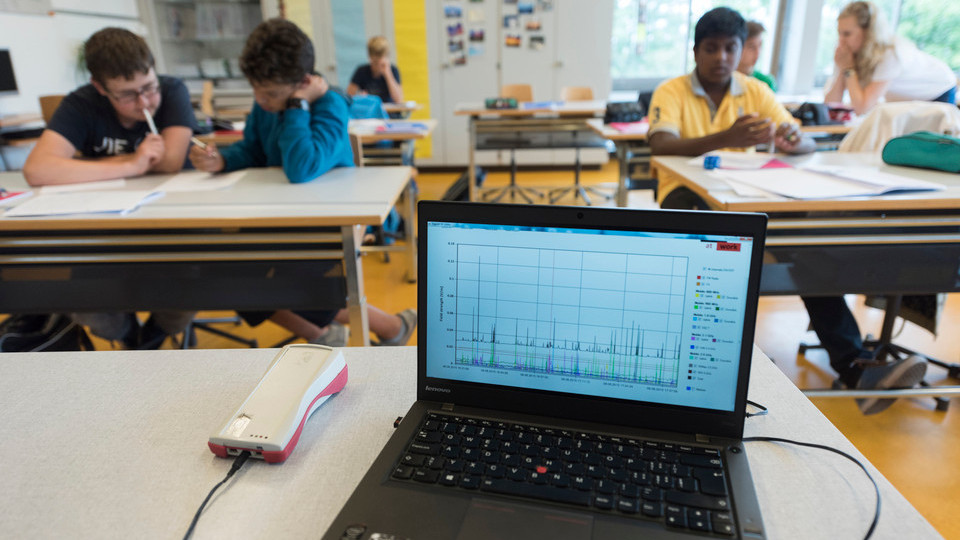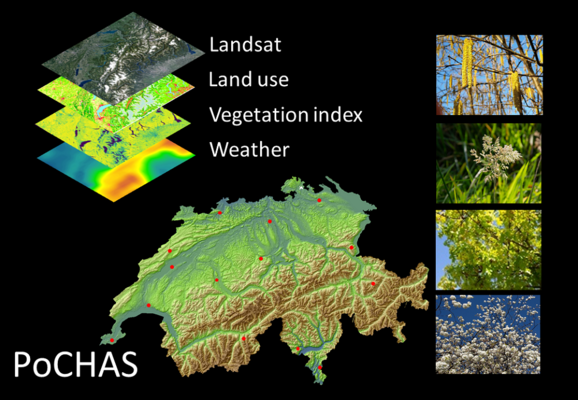Unit | Environmental Exposures and Health

Our continuous interaction with the environment affects our health in both positive and negative ways. Researchers in the Environmental Exposures and Health unit develop and integrate novel tools and methods to investigate the health effects of a wide range of environmental exposures. These include transportation noise, ionizing and non-ionizing radiation, ambient and indoor air pollution, environmental tobacco exposure, pesticides and climate change including heat waves.
From Exposure Assessment to Effective Public Health
The unit conducts epidemiological studies in children, adolescents and adults. Current studies are dealing with health-related quality of life, behaviour, respiratory diseases, childhood tumours, cardiovascular diseases and neurodegenerative diseases. The unit also conducts health risk assessments, including meta-analyses and systematic reviews and contributes to the development of guidelines and regulatory limits in the field of environmental health.

Martin Röösli
Full Professor, PhD
Head of Unit
+41612848383
martin.roosli@swisstph.ch
Key Projects

The EPOCHAL Study
Almost 20% of the Swiss population suffer from a pollen allergy, a dramatic increase from 100 years ago when it was less than 1%. At the same time, the amount of pollen in the air has increased. There is more to pollen allergies than bothersome sneezing: The EPOCHAL study will investigate how different concentrations of pollen from trees, grasses and weeds affect the heart, lungs, brain, sleep and quality of life. We aim to understand these health effects in both pollen-allergic and non-allergic people. Read more and find out how to participate in the EPOCHAL study here.

PoCHAS: Pollen and Cardiorespiratory Health and Allergic Symptoms
The PoCHAS project aims to model the ambient exposure to airborne pollen retrospectively using spatiotemporal models. This allows us to investigate how short-term exposure to pollen is related to respiratory and cardiovascular events. We will study mortality and hospitalization. Moreover, in light of increasing allergy prevalence and changing pollen season, we aim to study how the relationship between pollen and health has developed in the last decades, and which subpopulations might be most at risk. Moreover, combined exposure to pollen, air pollution and weather conditions may have synergistic effects, which alter the allergenicity of pollen - a research area which has been hardly explored. Read more about the project

MOBI-AIR: Accounting for MOBility in AIR pollution exposure estimates in studies on long-term health effects
Large scale epidemiological studies investigating long-term health effects of air pollution can typically only consider the residential locations of the participants, thereby ignoring the space-time activity patterns that likely influence total exposure. People are mobile and can be exposed to considerably different levels of air pollution or air pollution mixtures when inside vs. outside, commuting, recreating, or working. Neglecting these mechanisms in exposure assessment may lead to incorrect distributions of exposure over the population which may lead to incorrect exposure health relations in epidemiological studies. The main aim of this study is to assess whether more sophisticated estimates of individual exposure, considering population mobility, decreases the bias in health studies. Further information
Joint South Africa & Swiss Chair in Global Environmental Health
This chair in Cape Town university addresses emerging environmental health problems in South Africa. The collaboration consists of four projects: (i) a cohort study on agricultural pesticides effects on the development and respiratory health effects among rural children; (ii) a cohort study on the effects of ambient air pollutants on childhood asthma; (iii) an ecosystem approach on the health risks associated with chemical pollution and bio contamination of water sources and soils; and (iv) a health risk assessment on the impact of climate change on ecosystems, water and chemical usages. Further information about the project

TraNQuIL2 - Toward Prevention of Health Effects from Acute and Chronic Noise Exposure
Epidemiological research in the last decade has revealed associations between various cardiometabolic diseases and road, railway and aircraft noise. However, still little is known about mental health effects and most effective interventions to reduce health burden from transportation noise exposure. The TraNQuIL2 study will address several important research questions in relation to acute and long-term health effects from transportation noise to enhance our understanding of effective individual and population-level prevention measures. Read more
Selected Publications
All PublicationsBürgler A, Glick S, Luyten A, Shi S, Eeftens M. Associations between airborne pollen, pollen-related allergic rhinitis and blood pressure: a systematic review and meta-analysis. Environ Int. 2025;200:109517. DOI: 10.1016/j.envint.2025.109517
de Hoogh K et al. A Europe-wide characterization of the external exposome: a spatio-temporal analysis. Environ Int. 2025;200:109542. DOI: 10.1016/j.envint.2025.109542
Sandoval-Diez N et al. Determining the relationship between mobile phone network signal strength and radiofrequency electromagnetic field exposure: protocol and pilot study to derive conversion functions. Open Res Eur. 2025;4(in press). DOI: 10.12688/openreseurope.18285.2
Veludo A.F et al. Assessing radiofrequency electromagnetic field exposure in multiple microenvironments across ten European countries with a focus on 5G. Environ Int. 2025;200:109540. DOI: 10.1016/j.envint.2025.109540
Wicki B, Vienneau D, Schäffer B, Müller T.J, Pervilhac C, Röösli M. Military aircraft noise and drug administrations in psychiatric patients: follow-up and in-depth case-time series analysis. Environ Epidemiol. 2025;9(3):e390. DOI: 10.1097/ee9.0000000000000390
 Alberto Castro Fernández
Alberto Castro Fernández
 Kees de Hoogh
Kees de Hoogh
 Stefan Dongus
Stefan Dongus
 Marloes Eeftens
Marloes Eeftens
 Nicole Engelmann
Nicole Engelmann
 Adriana Fernandes Veludo
Adriana Fernandes Veludo
 Benjamin Flückiger
Benjamin Flückiger
 Remo Fortunato
Remo Fortunato
 Til Hänggi
Til Hänggi
 Hamed Jalilian
Hamed Jalilian
 Xing Jiang
Xing Jiang
 Seyram Kaali
Seyram Kaali
 Nicolas Loizeau
Nicolas Loizeau
 Axel Luyten
Axel Luyten
 Isabelle Mootz
Isabelle Mootz
 Martina Ragettli
Martina Ragettli
 Martin Röösli
Martin Röösli
 Nekane Sandoval Diez
Nekane Sandoval Diez
 Shoukai Sun
Shoukai Sun
 Eric Twomey
Eric Twomey
 Valentin Jaki Waibl
Valentin Jaki Waibl
 Irina Wipf
Irina Wipf